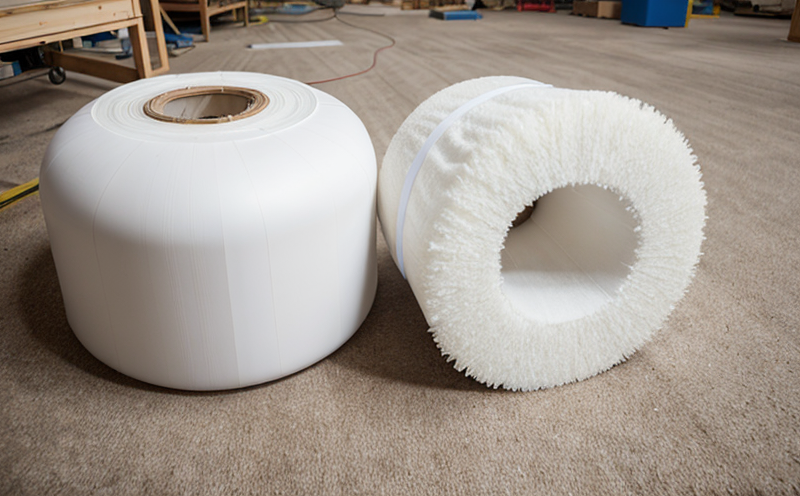ISO 717-2 Weighted Impact Sound Rating Testing
The ISO 717 series of standards provides comprehensive guidance on the measurement and evaluation of sound insulation in buildings. Among these, ISO 717-2 specifically addresses the determination of weighted impact sound insulation between rooms with a floor/ceiling construction.
This standard is crucial for ensuring that building structures effectively mitigate noise transmission from one room to another, particularly through floors and ceilings. The test method focuses on quantifying the sound pressure levels generated by footfalls or similar impacts in an adjacent space, which are then used to calculate the Impact Sound Class (ISC) or Impact Noise Rating (INR). These metrics help design teams understand how well a floor/ceiling system performs under impact loading.
The test setup involves placing a standard tapping machine above the specimen, simulating footsteps on the surface. The resulting sound pressure levels are measured in an adjacent room using microphones located at specific positions to ensure accurate representation of real-world conditions. It's important to note that this testing is typically conducted under controlled environmental conditions, such as those specified by ISO 140-2.
The test results yield the Weighted Impact Sound Rating (RI'), which indicates the impact sound insulation performance of a floor/ceiling construction. This value allows designers and builders to compare different materials and configurations easily. Compliance with this standard ensures that buildings meet regulatory requirements for minimizing noise pollution between living spaces.
The process begins with careful preparation of the test specimen, including its installation in a specially designed test chamber. Once set up, calibrated tapping machines are used to generate impact sounds at predetermined locations on the floor or ceiling. Microphones placed around the room capture these sounds before they reach the adjacent space. Special attention is paid to ensuring that all measurements adhere strictly to ISO 717-2 guidelines.
Post-testing analysis involves comparing measured sound pressures with reference levels defined in the standard. If the measured values fall below specified limits, it indicates satisfactory impact sound insulation performance. Otherwise, modifications may be necessary until compliance is achieved.
In summary, ISO 717-2 Weighted Impact Sound Rating Testing plays a vital role in ensuring effective noise control within building designs. By providing objective data on the performance of floor/ceiling constructions under impact loading, this standard supports informed decision-making during product development and construction phases.
Applied Standards
Benefits
The primary benefit of conducting ISO 717-2 Weighted Impact Sound Rating Testing lies in its ability to provide precise, quantifiable data regarding the impact sound insulation properties of floors and ceilings. This information is invaluable for several reasons:
- Enhanced Compliance: Ensures that constructions meet stringent regulatory standards set forth by international organizations like ISO.
- Better Design Decisions: Allows architects and engineers to make informed choices about material selection based on empirical evidence rather than assumptions or guesswork.
- Increased Client Satisfaction: By delivering high-quality, noise-reducing solutions, businesses can enhance customer satisfaction and brand reputation.
Industry Applications
This testing method finds application across various sectors where proper sound insulation is paramount:
- Housing developments
- Offices and commercial buildings
- Hotels and hospitality venues
- Healthcare facilities
- Education institutions
- Residential complexes





